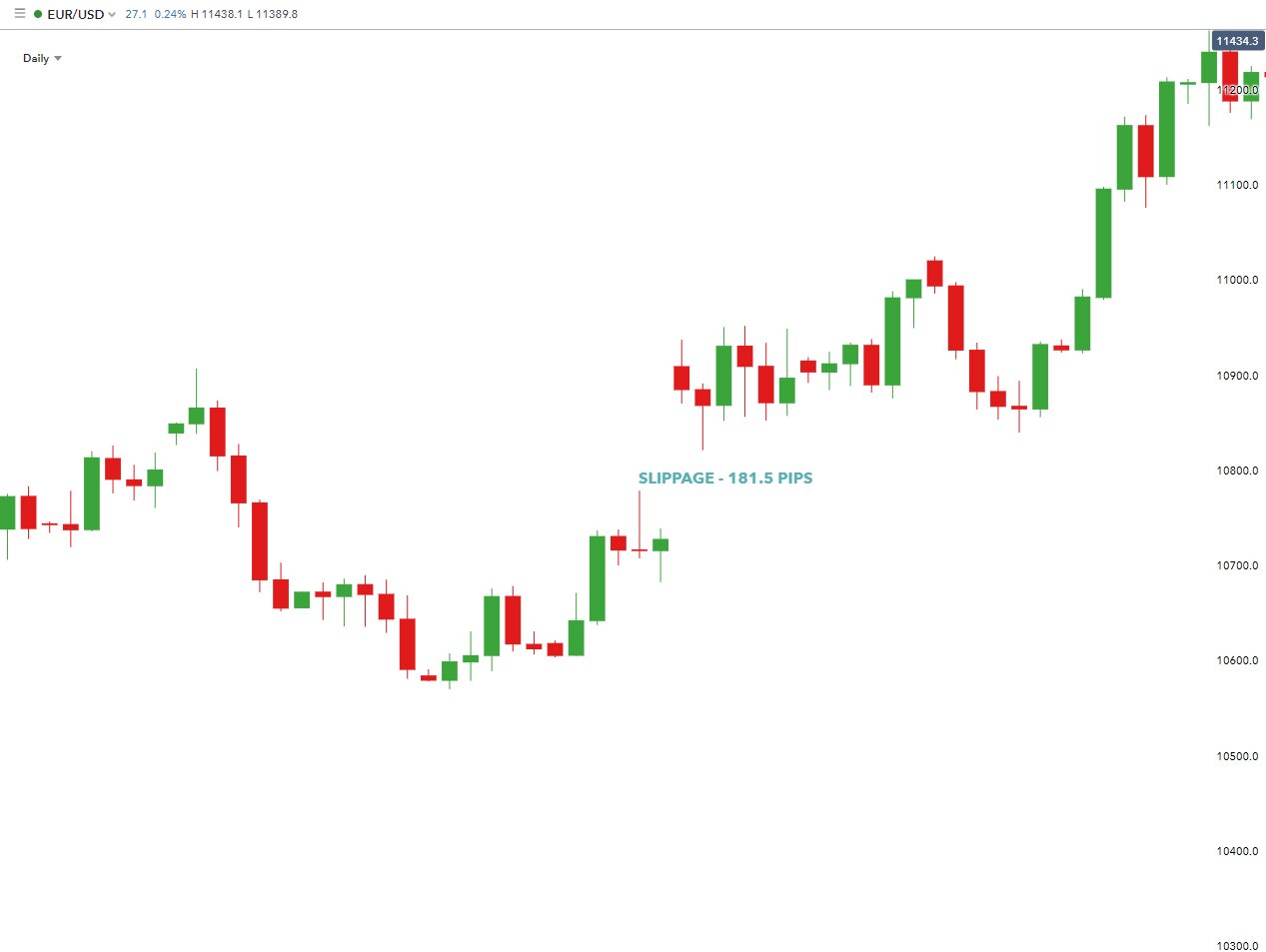Introduction
Welcome to the exciting and ever-evolving world of cryptocurrency, where digital assets have taken the financial market by storm. With the rise of Bitcoin in 2009, followed by the introduction of thousands of alternative cryptocurrencies, the concept of decentralized digital currency has captured the attention of investors, traders, and technology enthusiasts around the globe.
As the popularity of cryptocurrencies continues to grow, so does the curiosity surrounding their price movements. Investors and traders constantly monitor price fluctuations, trying to understand the factors that influence these changes. The price of a cryptocurrency can experience significant volatility, sometimes skyrocketing to new heights or plunging to unexpected lows within a matter of hours.
This article explores the various factors that can impact cryptocurrency prices. It is important to note that cryptocurrency markets are highly speculative and can be influenced by a multitude of factors, making it challenging to pinpoint the exact cause of price movements. However, by considering key elements such as market demand and supply, investor sentiment, regulatory environment, technological advancements, market manipulation, adoption rates, competition, economic factors, and global events, we can gain a better understanding of the dynamics at play.
Understanding the factors affecting cryptocurrency prices can empower investors to make informed decisions and strategize their investments effectively. It is crucial to remember that this analysis serves as a guide and not definitive financial advice, as the cryptocurrency market remains highly speculative and volatile.
Now, let’s delve into the factors that can shape cryptocurrency prices and explore how they can impact the crypto market.
Market Demand and Supply
One of the primary factors influencing cryptocurrency prices is the basic economic principle of supply and demand. Cryptocurrencies have a limited supply, as defined by their underlying protocols. For example, Bitcoin has a capped supply of 21 million coins, meaning that there will only ever be 21 million Bitcoins in existence. This limited supply creates scarcity, which can drive up the price of a cryptocurrency as demand exceeds supply.
When there is a high demand for a particular cryptocurrency, buyers are willing to pay higher prices to acquire it, driving the price upward. Conversely, if the supply of a cryptocurrency outweighs the demand, sellers may need to lower their prices to attract buyers, resulting in a decrease in price.
Factors that affect market demand include investor sentiment, cybersecurity concerns, macroeconomic trends, and the overall perception of cryptocurrencies as a viable investment. For example, if there is positive news or a favorable regulatory environment surrounding cryptocurrencies, it can generate increased demand, pushing prices higher.
On the supply side, factors such as mining difficulty, rewards, and block rewards halving events can impact the availability of new coins in the market. Note that the issuance rate of new coins varies across different cryptocurrencies, with some having fixed supplies and others having inflationary or deflationary mechanisms.
In summary, the balance between market demand and supply plays a crucial role in determining the price of a cryptocurrency. When demand exceeds supply, prices tend to rise, while an oversupply can lead to price drops. It is important to monitor market dynamics and understand the demand-supply equilibrium to make informed decisions in the crypto market.
Investor Sentiment
Investor sentiment refers to the overall attitude and perception of investors towards a particular cryptocurrency or the entire crypto market. It plays a significant role in influencing cryptocurrency prices as it affects buying and selling decisions.
Positive investor sentiment can drive prices higher as investors become more optimistic about the future prospects of a cryptocurrency. This optimism can be fueled by factors such as positive news, partnerships, technological advancements, or the successful implementation of new features or upgrades. When investors believe that a cryptocurrency has strong potential, they are more likely to buy and hold it, resulting in increased demand and price appreciation.
Conversely, negative investor sentiment can lead to price declines. Factors such as negative media coverage, regulatory crackdowns, security breaches, or market manipulation can erode investor confidence and trigger panic selling. This selling pressure can drive prices downwards, creating a bearish sentiment in the market.
The crypto market is highly influenced by emotions and speculation, which can lead to sudden and drastic price movements. Fear of missing out (FOMO) and fear, uncertainty, and doubt (FUD) often drive investor sentiment, causing rapid shifts in price. It is essential for investors to stay informed, manage their emotions, and approach investment decisions with a long-term perspective.
Monitoring investor sentiment can be challenging, but several indicators and tools can help gauge the overall sentiment in the market. Social media platforms, online forums, and news articles can provide insights into the prevailing sentiment and public perception of cryptocurrencies. Additionally, sentiment analysis tools and sentiment indices can analyze large sets of data and sentiment indicators to provide a quantitative measure of investor sentiment.
It is important to note that investor sentiment can sometimes be irrational and driven by herd mentality. Therefore, it is crucial to conduct thorough research, evaluate the fundamentals of a cryptocurrency, and make informed investment decisions rather than being swayed solely by prevailing sentiment.
Regulatory Environment
The regulatory environment surrounding cryptocurrencies has a profound impact on their prices. Government regulations, policies, and legal frameworks can influence market sentiment and determine the level of acceptance and adoption of cryptocurrencies.
The cryptocurrency market operates within a complex web of regulations that vary across different jurisdictions. Some countries have embraced cryptocurrencies and blockchain technology, providing clear regulations and supportive frameworks. These jurisdictions often attract investments and foster innovation in the crypto space, leading to increased demand and higher prices.
On the other hand, governments that impose strict regulations and restrictions on cryptocurrencies can create uncertainty and hinder market growth. Regulatory actions such as bans, limitations on trading, or stringent compliance requirements can erode investor confidence and dampen demand, resulting in price declines.
Additionally, regulatory announcements and news can cause short-term price volatility. Positive regulatory developments, such as the approval of a cryptocurrency exchange-traded fund (ETF) or the recognition of cryptocurrencies as a legal form of payment, can generate optimism and drive prices up. Conversely, negative regulatory news, such as a crackdown on unregulated exchanges or stricter KYC/AML requirements, can lead to price drops as market participants react to increased uncertainties.
It is important for investors to stay updated on the regulatory landscape and the stance of different governments towards cryptocurrencies. By understanding the regulatory environment, investors can anticipate potential impacts on prices and adjust their investment strategies accordingly.
As the cryptocurrency market matures, regulatory clarity and harmonization across jurisdictions are becoming increasingly important. Well-defined and supportive regulations can instill confidence in investors, attract institutional participation, and contribute to the overall stability and growth of the cryptocurrency market.
Technological Advancements
Technological advancements play a significant role in shaping the cryptocurrency market and influencing price movements. As blockchain technology continues to evolve, new innovations and developments can have a profound impact on the value and adoption of cryptocurrencies.
One important aspect is the scalability of blockchain networks. Scalability refers to the ability of a blockchain to process a large number of transactions quickly and efficiently. Scaling solutions such as layer 2 protocols, sidechains, or off-chain solutions can improve transaction speeds and reduce fees, making cryptocurrencies more usable and attractive to users. When a cryptocurrency implements an effective scaling solution, it can enhance its utility and, in turn, drive up demand and price.
Another crucial technological advancement is interoperability. Interoperability allows different blockchain networks to communicate and interact with each other seamlessly. When cryptocurrencies can interoperate, it expands their functionality and opens up opportunities for cross-chain interactions and integration with other decentralized applications (DApps). This interoperability can enhance the overall value proposition of a cryptocurrency and drive demand.
Furthermore, advancements in privacy and security technologies are highly relevant to cryptocurrencies. Privacy-focused coins or protocols that prioritize user anonymity and data protection can appeal to a wide range of users and attract demand. Additionally, advancements in security measures, such as robust encryption algorithms or improved smart contract auditing processes, can enhance the trust and confidence of users, leading to increased adoption and a positive impact on prices.
Innovation in consensus mechanisms is also an important factor to consider. Different cryptocurrencies employ various consensus algorithms, such as proof-of-work (PoW), proof-of-stake (PoS), or delegated proof-of-stake (DPoS). New consensus mechanisms that offer improved scalability, energy efficiency, or enhanced security can potentially attract attention and drive price movements as users recognize the value and potential of these innovations.
It is worth noting that technological advancements can also lead to price volatility. News of a successful upgrade or the release of a highly anticipated feature can generate excitement and speculation, driving prices up in the short term. Conversely, technical glitches, security vulnerabilities, or delays in development can trigger negative sentiment and result in price drops.
Staying informed about technological advancements in the cryptocurrency space can help investors anticipate potential impacts on price and evaluate the long-term value proposition of a cryptocurrency.
Market Manipulation
Market manipulation is a significant factor that can impact cryptocurrency prices. The decentralized and relatively unregulated nature of the crypto market makes it susceptible to manipulation by certain actors and entities seeking to influence prices for their own gain.
One common form of market manipulation is known as “pump and dump” schemes. In these scenarios, a group of individuals or entities coordinate to inflate the price of a specific cryptocurrency through false or misleading information. Once the price reaches a certain level, the manipulators sell their holdings, causing the price to plummet. This type of manipulation takes advantage of unsuspecting investors who buy in at the inflated prices, leading to significant losses for those caught in the scheme.
Another form of market manipulation involves spoofing and wash trading. Spoofing occurs when traders place large orders to create the illusion of significant market demand or supply, only to cancel those orders once the desired price movement is achieved. Wash trading involves creating fake trades to simulate liquidity and activity in the market. These practices can deceive other market participants and manipulate price movements.
Manipulation can also occur through the spread of false information or rumors about a cryptocurrency. Online forums, social media platforms, and other communication channels can be used to spread misinformation and manipulate market sentiment. Traders and investors may make decisions based on inaccurate or fabricated news, leading to mispricing and volatility.
While market manipulation can be difficult to detect and prevent, regulatory efforts are underway to combat these practices. Increased scrutiny, surveillance, and enforcement efforts by regulatory bodies and exchanges aim to deter manipulative activities and protect market integrity.
Investors should be cautious and conduct thorough research before making investment decisions. Keeping a skeptical eye towards market rumors and being aware of potential market manipulation can help mitigate the risks associated with manipulated price movements.
Overall, market manipulation can distort the true value of cryptocurrencies and introduce short-term volatility. As the cryptocurrency market continues to evolve and regulatory measures strengthen, the hope is to create a more secure and transparent environment that is resistant to manipulation.
Adoption Rates
Adoption rates are a crucial factor in determining the value and price stability of cryptocurrencies. The level of adoption refers to the acceptance and use of cryptocurrencies by individuals, businesses, and institutions as a medium of exchange, store of value, or investment asset.
When a cryptocurrency gains widespread adoption, it increases its utility, network effect, and overall demand, which can drive up its price. Increased adoption means more users transacting with the cryptocurrency, leading to increased liquidity and market activity.
Several factors influence adoption rates. User-friendliness and ease of use are key considerations. Cryptocurrencies that offer intuitive interfaces, simple wallet setups, and seamless integration with existing financial systems are more likely to attract new users.
Merchant acceptance is another important factor. If businesses start accepting a specific cryptocurrency as a form of payment, it not only encourages adoption by consumers but also increases the overall utility and value of the cryptocurrency. Payment processors and platforms that facilitate cryptocurrency transactions can play a significant role in driving adoption rates.
Additionally, regulatory clarity and supportive frameworks can foster adoption by providing confidence and certainty to businesses and individuals. When governments create favorable conditions for the use of cryptocurrencies, it encourages more widespread adoption and acceptance.
Partnerships and collaborations between cryptocurrencies and established organizations or institutions can also drive adoption. When cryptocurrencies forge partnerships with traditional financial institutions, technology companies, or industry leaders, it increases their credibility and exposure, attracting new users and investors.
Education and awareness initiatives are essential to increasing adoption rates. The more individuals understand the benefits and potential of cryptocurrencies, the more likely they are to adopt and use them. Efforts to educate the public, promote discussions, and dispel myths and misconceptions can pave the way for increased adoption.
Adoption rates can influence price volatility. Rapid and widespread adoption can lead to significant price increases, as witnessed by the Bitcoin boom in 2017. Conversely, slow adoption rates or a lack of interest can result in price stagnation or decline.
Monitoring adoption rates and assessing the level of real-world usage of cryptocurrencies can provide insights into their long-term potential and impact on prices. As adoption rates increase, cryptocurrencies have the potential to disrupt traditional financial systems and become increasingly mainstream.
Competition
The competitive landscape of the cryptocurrency market can have a significant impact on prices. As new cryptocurrencies emerge and existing ones evolve, they compete for market share, user adoption, and investor attention. Competition fosters innovation, but it can also lead to price volatility and shifts in market dynamics.
One aspect of competition is the rivalry among cryptocurrencies within the same category or sector. For example, there are numerous cryptocurrencies competing to be recognized as a decentralized digital currency or as a platform for decentralized applications. In these cases, price movements of one cryptocurrency can directly influence the prices of others in the same category.
Competition between cryptocurrencies often revolves around their unique features, technological advancements, and user value proposition. Cryptocurrencies with superior technology, scalability, interoperability, privacy, or security may gain an edge over their competitors, attracting users and investors. This can lead to price appreciation for the superior cryptocurrency and potential price declines for competitors.
Competition is not limited to cryptocurrencies within the same category. Traditional financial institutions are also joining the race by exploring the development of their own digital currencies or blockchain solutions. The entry of these established players into the market can bring increased credibility but also intensify competition for market share.
Outside factors and developments in the broader tech industry can also impact competition within the cryptocurrency market. For example, advancements in alternative technologies, such as decentralized finance (DeFi) or stablecoins, can compete with traditional cryptocurrencies for user adoption and investment capital.
It’s important for investors to conduct thorough research to understand the competitive landscape and evaluate the strengths and weaknesses of different cryptocurrencies. Market dynamics and price movements can be influenced by the relative success or failure of each cryptocurrency in attracting users and maintaining a competitive edge.
Competition can lead to price volatility as market participants assess the potential of different cryptocurrencies. Investors must stay informed about new developments, partnerships, and technological advancements that may impact the competitive landscape and adjust their strategies accordingly.
In a highly competitive market, cryptocurrencies must continuously innovate and adapt to remain relevant and attract users. The dynamics of competition within the cryptocurrency market will continue to shape the prices and overall direction of the industry.
Economic Factors
Economic factors play a crucial role in shaping the prices of cryptocurrencies. The interaction between cryptocurrencies and the broader economy can have a significant impact on their value and price movements.
One key economic factor is inflation and the purchasing power of fiat currencies. Cryptocurrencies, particularly those with a capped supply like Bitcoin, are often viewed as potential hedges against inflation. When inflation rates rise, investors may turn to cryptocurrencies as a store of value and hedge against devaluation of traditional currencies. This increased demand can drive up cryptocurrency prices.
Macroeconomic indicators, such as interest rates and monetary policies, also influence the prices of cryptocurrencies. When central banks lower interest rates or engage in quantitative easing, it can lead to an increase in liquidity and investor appetite for riskier assets, including cryptocurrencies. Conversely, tightening monetary policies or rising interest rates can reduce liquidity and potentially dampen cryptocurrency prices.
Socioeconomic factors also come into play. Economic instability, political unrest, or financial crises in certain regions can lead to increased interest in cryptocurrencies as a means of protecting wealth or facilitating cross-border transactions. These factors can drive up demand and prices, particularly in countries with unstable or restricted financial systems.
Market sentiment and investor confidence are closely tied to economic factors. Positive economic indicators, such as strong GDP growth, low unemployment rates, or increased consumer spending, can boost investor optimism and lead to higher demand for cryptocurrencies. Negative economic news, such as recessions, job losses, or financial market turbulence, can create uncertainty and drive investors towards safe-haven assets, potentially affecting cryptocurrency prices.
Exchange rates and currency fluctuations also impact cryptocurrencies. Cryptocurrencies often trade against major fiat currencies, and fluctuations in these exchange rates can influence their prices. A weakening fiat currency against which a cryptocurrency is paired can lead to price increases for that cryptocurrency, as it becomes relatively more valuable.
It is important for investors to consider economic factors when analyzing cryptocurrency prices. Monitoring global economic trends, central bank actions, and geopolitical events can provide insights into potential impacts on cryptocurrency value.
It is worth noting that correlations between economic factors and cryptocurrency prices may not always be straightforward or consistent. The crypto market is highly speculative and influenced by a variety of factors, including technological advancements, investor sentiment, and regulatory developments. Therefore, investors should approach cryptocurrency investments with a comprehensive understanding of the broader economic landscape, while also considering other factors that impact the cryptocurrency market.
Global Events
Global events, whether political, economic, or social, can have a significant impact on cryptocurrency prices. These events can create volatility, shape investor sentiment, and influence market dynamics.
Political events, such as elections, government policies, or geopolitical tensions, can generate uncertainty in financial markets, including the cryptocurrency space. Changes in political regimes or shifts in government policies related to cryptocurrencies can lead to price fluctuations as investors reassess risks and opportunities. For example, regulatory crackdowns or bans on cryptocurrencies in certain jurisdictions can dampen investor sentiment and lead to price declines.
Economic events, such as recessions, financial crises, or changes in monetary policies, can also impact cryptocurrency prices. Economic downturns or financial instability may increase investor interest in cryptocurrencies as alternative investment options. However, economic recoveries or positive economic indicators can attract investors back to traditional financial assets, potentially leading to price corrections in cryptocurrencies.
Social events, including publicized endorsements or criticisms of cryptocurrencies by notable individuals or influential organizations, can influence market sentiment and drive price movements. Comments from prominent figures, such as business leaders, celebrities, or government officials, can generate media attention, impacting the perception and adoption of cryptocurrencies. Additionally, news related to cybersecurity breaches, regulations, or institutional adoption can also create market-moving events.
Global financial system crises, such as stock market crashes or currency devaluations, can impact cryptocurrency prices. During turbulent times, investors may seek refuge in cryptocurrencies as a perceived safe-haven asset or as a means of diversification. This increased demand can drive up prices. However, it is important to note that the correlation between traditional financial markets and cryptocurrencies is not always straightforward, and cryptocurrencies may also experience price declines during market sell-offs.
Natural disasters, pandemics, or other unexpected events can also have implications for cryptocurrency prices. These events can disrupt global economic activities, affect supply chains, and lead to changes in consumer behavior. The response and resilience of cryptocurrencies during such events can vary, with price movements influenced by market sentiment and individual perceptions of risk and opportunity.
It is crucial for investors to stay informed about global events and their potential impact on the cryptocurrency market. Understanding the interplay between these events and cryptocurrency prices can help investors make more informed decisions and navigate market volatility.
Keep in mind that the dynamics between global events and cryptocurrency prices are complex and can be influenced by a multitude of factors. Therefore, comprehensive research and analysis, along with a long-term investment perspective, are vital to effectively assess the impact of global events on the cryptocurrency market.
Conclusion
Understanding the various factors that influence cryptocurrency prices is essential for investors seeking to navigate the volatile and dynamic crypto market. Market demand and supply, investor sentiment, regulatory environment, technological advancements, market manipulation, adoption rates, competition, economic factors, and global events all play a role in shaping cryptocurrency prices.
The balance between market demand and supply is a key determinant of cryptocurrency prices. Investor sentiment, driven by factors such as news, perceptions, and emotions, can lead to rapid price movements. The regulatory environment provides a framework within which cryptocurrencies operate and can significantly impact market dynamics. Technological advancements, including scaling solutions, interoperability, and security enhancements, can drive price appreciation. Market manipulation can distort prices and erode investor confidence.
Adoption rates, influenced by factors such as user-friendliness, merchant acceptance, regulatory clarity, partnerships, and education, impact the value and utility of cryptocurrencies. Competition within the cryptocurrency market can influence prices and create volatility. Economic factors, including inflation, monetary policies, socioeconomic trends, and exchange rates, have a direct impact on cryptocurrency prices. Global events, such as political, economic, social, and natural disasters, can trigger price movements as they influence market sentiment and risk perception.
To navigate the cryptocurrency market successfully, investors must stay informed, conduct thorough research, and assess the interplay of these factors. It is crucial to manage risk, diversify portfolios, and adopt a long-term investment perspective when engaging with cryptocurrencies. While price volatility is inherent to the crypto market, understanding the factors that drive price movements can aid in making more informed investment decisions.
As the cryptocurrency market continues to evolve and mature, it is expected that the interplay of these factors will become more complex. Therefore, staying informed and adapting to market dynamics will be crucial for investors aiming to seize opportunities in this exciting and ever-changing landscape.

























